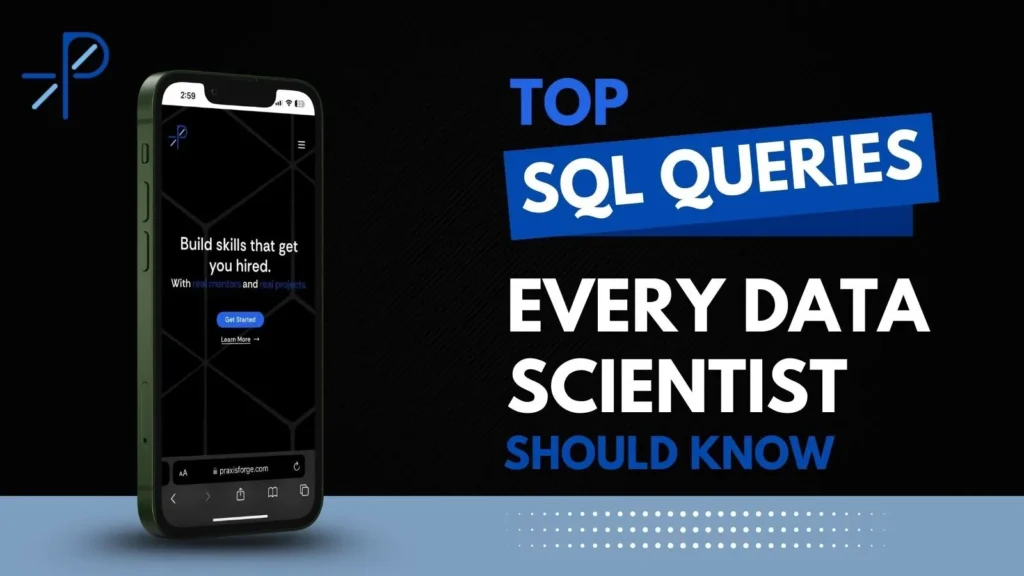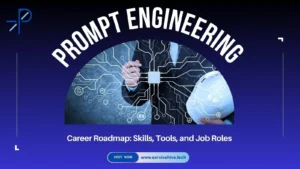
Why Learners Choose Praxis Forge to Master Prompt Engineering
Why Learners Choose Praxis Forge to Master Prompt Engineering Introduction Prompt Engineering has become one of the most in-demand AI

Introduction to SQL in Data Science
In the world of data science, SQL (Structured Query Language) is more than just a tool — it’s the foundation of working with data. From extracting datasets to cleaning, transforming, and analyzing information, SQL gives data scientists the power to communicate directly with databases.
While machine learning frameworks like TensorFlow and PyTorch often steal the spotlight, the truth is simple: without SQL, a data scientist can’t efficiently prepare the data needed for those advanced models.
Why SQL Matters for Data Scientists
SQL as the Foundation of Data Manipulation
SQL is the universal language of databases. Whether you’re working with structured datasets in finance, healthcare, or retail, SQL ensures you can retrieve and manipulate the information you need with precision.
SQL in Modern Machine Learning Pipelines
Data scientists spend nearly 80% of their time cleaning and preparing data. SQL integrates seamlessly into data pipelines, making tasks like aggregation, filtering, and joining datasets much easier before handing data off to Python or R scripts.
Essential SQL Queries for Data Scientists
SELECT Statements: Extracting Data Efficiently
The SELECT statement is the cornerstone of SQL. It allows you to retrieve specific columns from a dataset without loading unnecessary data.
SELECT name, age, salary FROM employees;
WHERE Clause: Filtering Data for Insights
Filtering is crucial for narrowing down datasets to only the rows that matter.
SELECT * FROM sales WHERE revenue > 10000;
GROUP BY: Summarizing and Aggregating Data
Aggregating data helps uncover trends and insights.
SELECT department, AVG(salary)
FROM employees
GROUP BY department;
JOIN Operations: Combining Multiple Tables
Real-world databases often store data across multiple tables. Joins bring them together.
SELECT employees.name, departments.department_name
FROM employees
JOIN departments
ON employees.dept_id = departments.id;
ORDER BY: Sorting Results Effectively
Sorting data helps create cleaner reports.
SELECT name, salary FROM employees ORDER BY salary DESC;
LIMIT and OFFSET: Controlling Data Output
Perfect for sampling data during EDA.
SELECT * FROM customers LIMIT 10 OFFSET 20;
Subqueries: Writing Nested SQL Queries
Use subqueries to solve complex problems in fewer steps.
SELECT name
FROM employees
WHERE salary > (SELECT AVG(salary) FROM employees);
Window Functions: Advanced Analytics in SQL
Useful for ranking, running totals, and time-series analysis.
SELECT name, salary, RANK() OVER (ORDER BY salary DESC) AS rank
FROM employees;
Common Table Expressions (CTEs): Cleaner Code
CTEs make queries more readable and modular.
WITH high_salary AS (
SELECT name, salary FROM employees WHERE salary > 70000
)
SELECT * FROM high_salary;
Handling NULL Values: Ensuring Data Integrity
Handling missing values properly avoids distorted results.
SELECT COALESCE(salary, 0) AS salary FROM employees;
Real-World SQL Applications in Data Science
SQL for Data Cleaning and Preprocessing
SQL queries are used to remove duplicates, handle null values, and standardize data formats before analysis.
SQL in Exploratory Data Analysis (EDA)
By grouping, filtering, and aggregating, SQL helps generate quick descriptive statistics.
SQL for Model Training and Feature Engineering
Many machine learning features are engineered using SQL queries before being exported to Python-based models.
Best Practices for Writing Efficient SQL Queries
Optimizing Query Performance
Avoid SELECT * when possible. Instead, specify only the columns you need.
Using Indexes Effectively
Indexes can drastically improve query speed when working with large datasets.
Writing Readable and Maintainable SQL Code
Use consistent formatting, indentation, and meaningful alias names for clarity.
SQL Tools and Platforms Data Scientists Use
PostgreSQL
An open-source database known for its scalability and advanced features.
MySQL
A popular choice for web applications and business databases.
Big Query and Cloud SQL Solutions
Cloud-native SQL tools allow handling massive datasets with ease.
Conclusion: Mastering SQL for a Competitive Edge
Mastering SQL is non-negotiable for data scientists. Whether you’re preparing data for machine learning, conducting exploratory analysis, or generating business insights, SQL remains the backbone of data science workflows.
By practicing the top SQL queries every data scientist should know, you’ll not only boost your technical skills but also make yourself a more valuable professional in today’s data-driven job market.
Take the Next Step with Praxis Forge
At Praxis Forge, we’re passionate about helping learners and professionals master in-demand tech skills like SQL, Python, and Machine Learning. Our expert-led EdTech programs are designed to prepare you for real-world challenges in data science and beyond.
👉 Ready to accelerate your data science journey?
Visit us today at www.praxisforge.com and start learning the skills that will define tomorrow’s data-driven world.
FAQs: Top SQL Queries Every Data Scientist Should Know
Q1: Do all data scientists need to learn SQL?
Yes, SQL is essential for accessing and manipulating relational databases.
Q2: Is SQL still relevant in the age of big data?
Absolutely. Even big data platforms like Hive and Spark use SQL-like syntax.
Q3: Which SQL query is used the most in data science?
The SELECT statement, combined with filtering and aggregation, is most common.
Q4: How can SQL help in machine learning?
SQL helps in feature engineering, preprocessing, and extracting clean datasets.
Q5: What’s the difference between JOIN and UNION?
JOIN combines columns from multiple tables, while UNION stacks rows from multiple queries.
Q6: Where can I practice SQL queries for free?
Platforms like W3Schools SQL Tutorial offer interactive practice.

Why Learners Choose Praxis Forge to Master Prompt Engineering Introduction Prompt Engineering has become one of the most in-demand AI

Prompt Engineering Career Roadmap: Skills Tools and Job Roles Table of Contents Introduction What Is Prompt Engineering? Why Prompt Engineering

What Is Prompt Engineering? A Beginner’s Guide to the Future of AI Jobs Artificial Intelligence (AI) is transforming the way

Python vs JavaScript: Which Language Should You Learn First? Introduction Choosing your first programming language can shape your entire tech

How Praxis Forge Teaches Prompt Engineering Differently from Other Platforms Table of Contents What Is Prompt Engineering and Why It

Praxis Forge vs Generic Online Courses: Which One Really Gets You Hired? Table of Contents The Problem with Generic Online